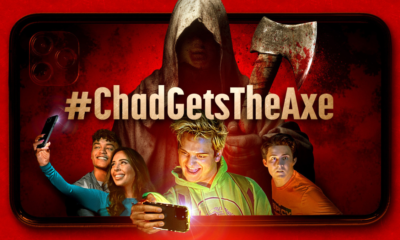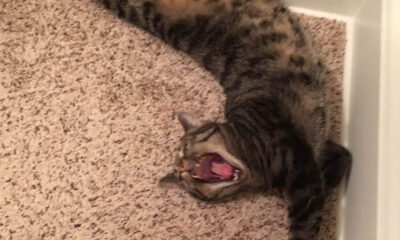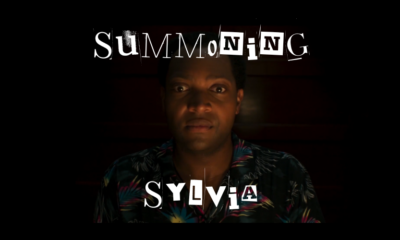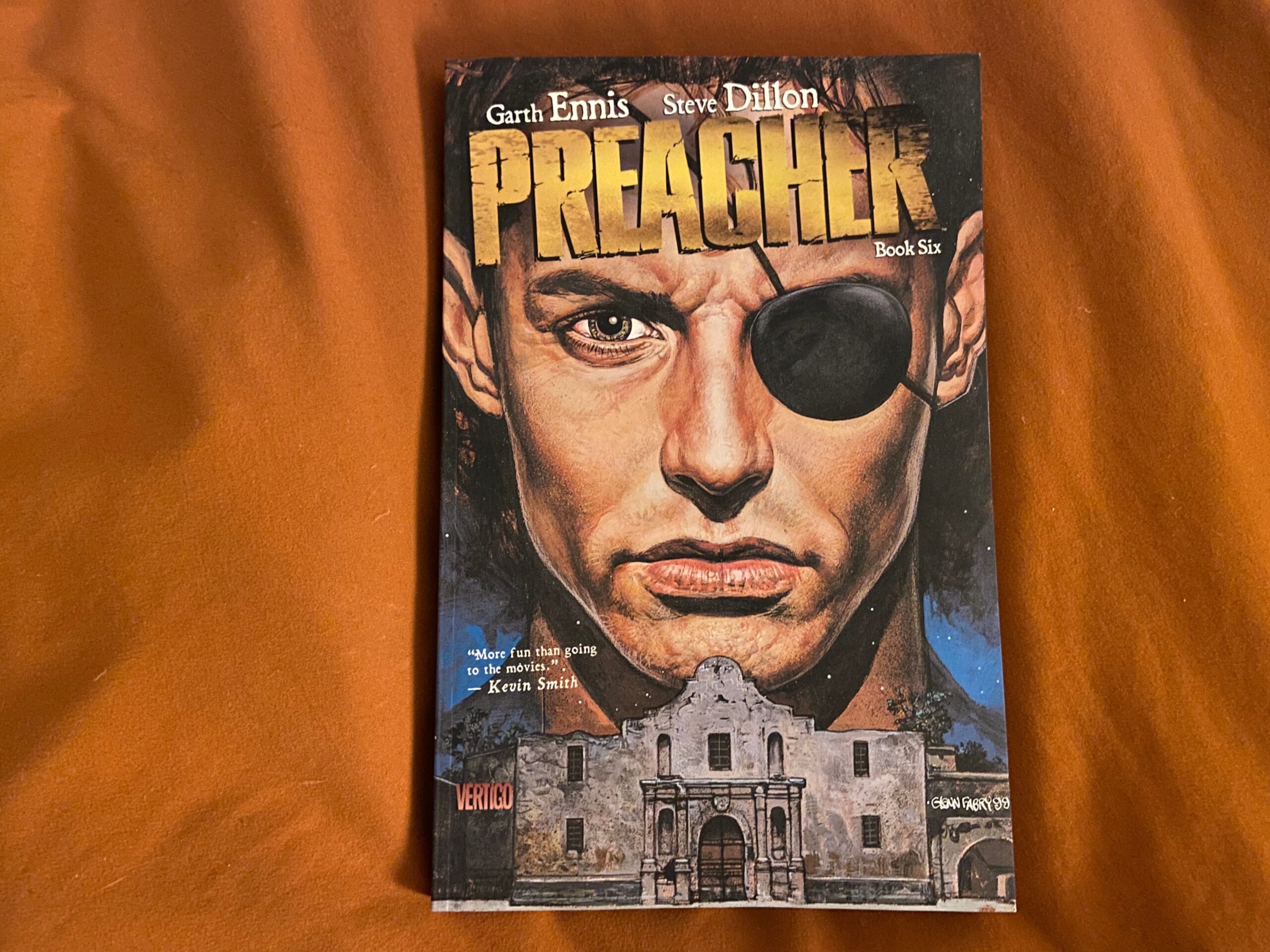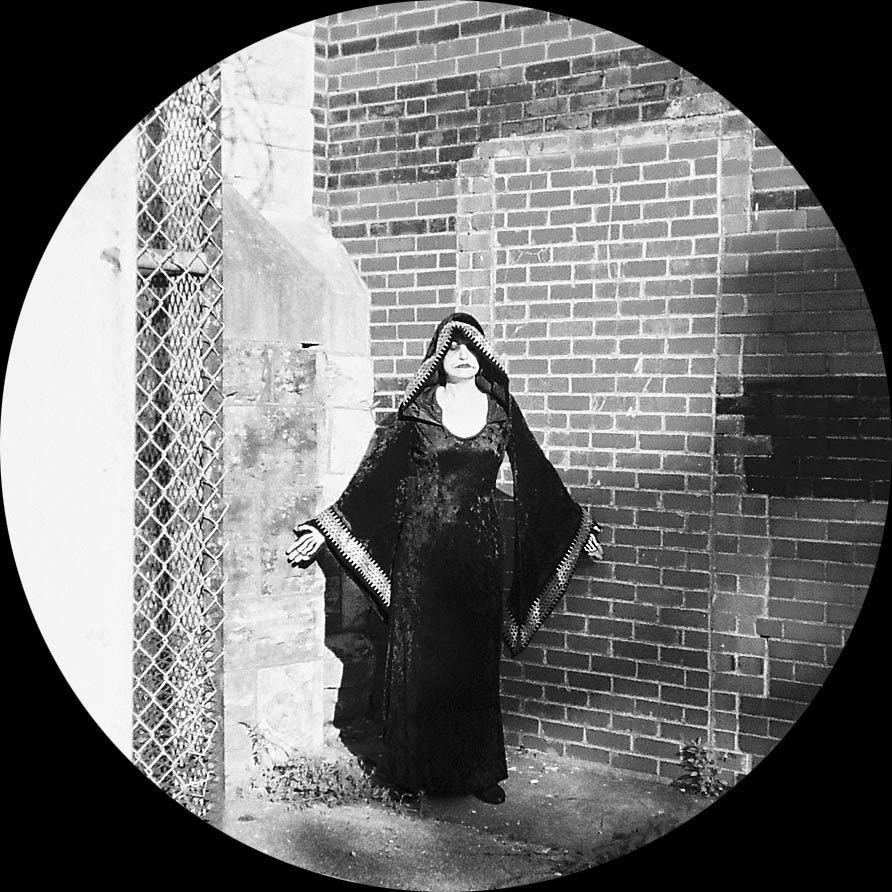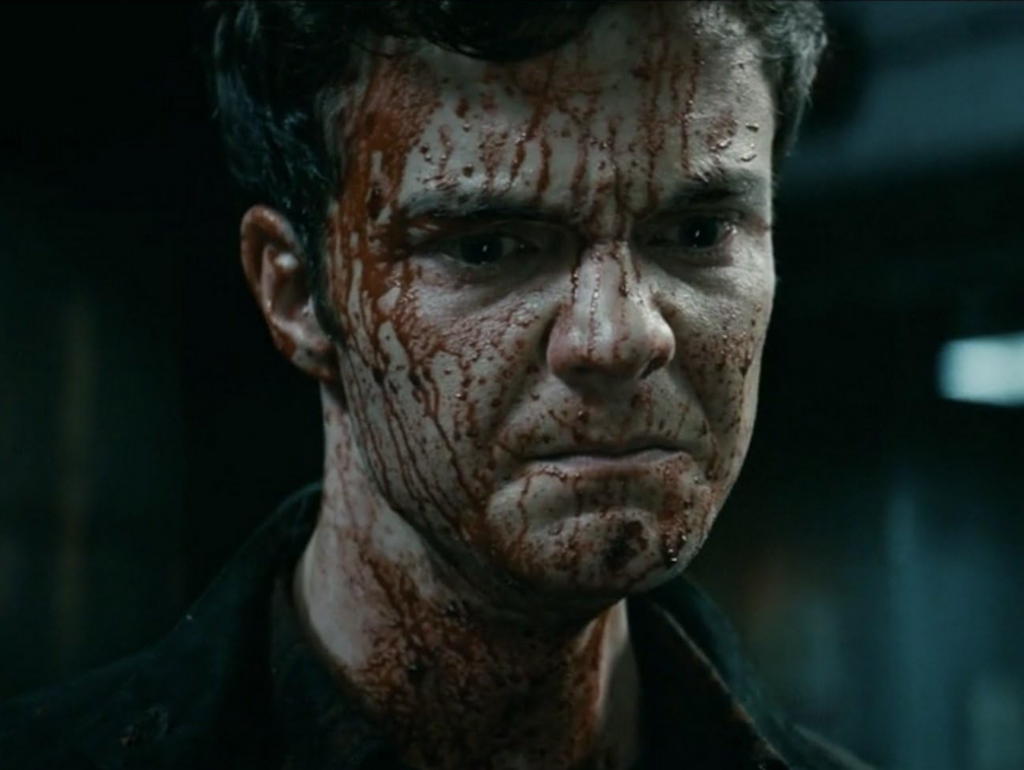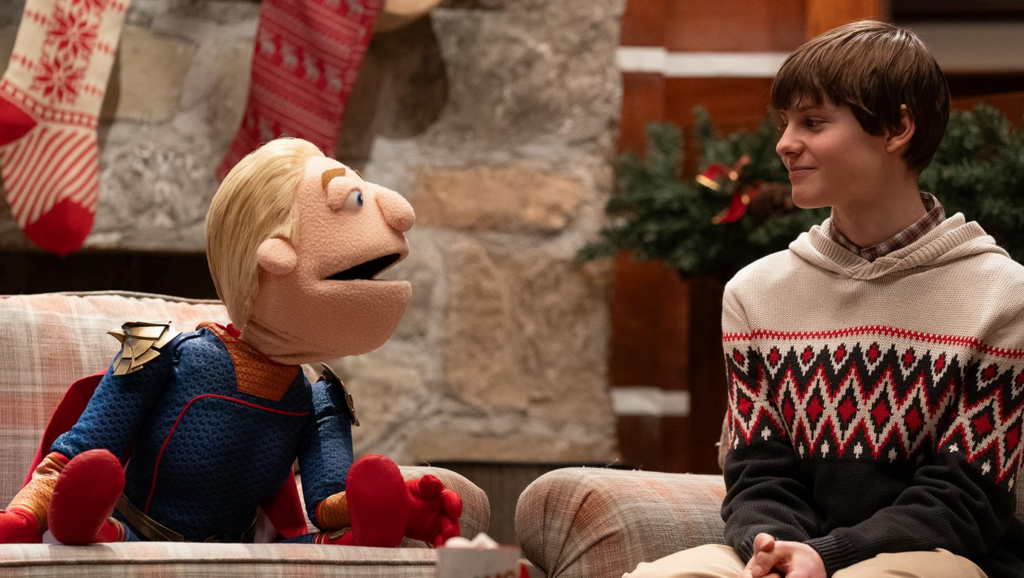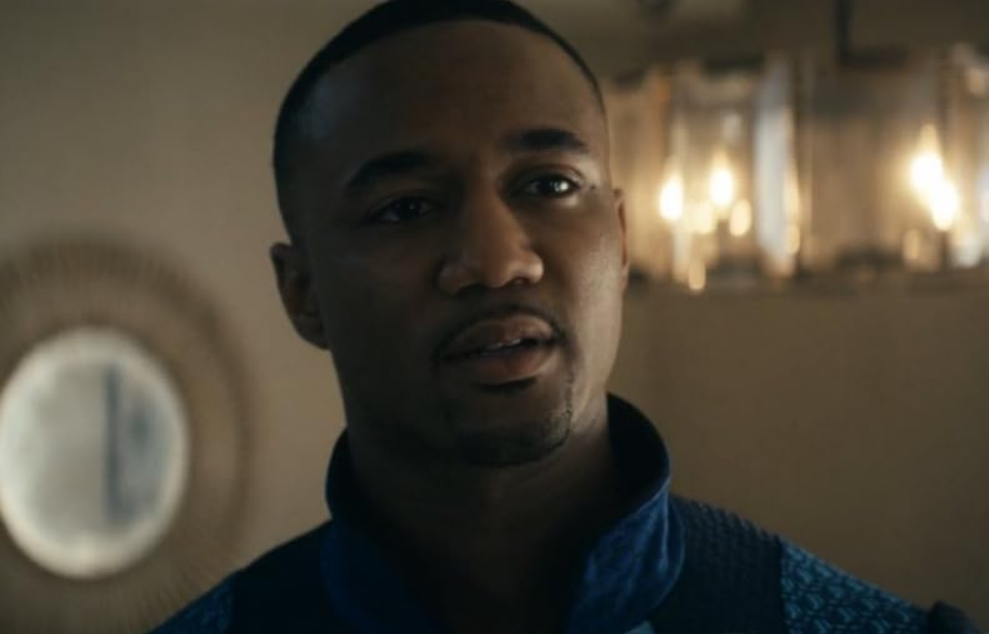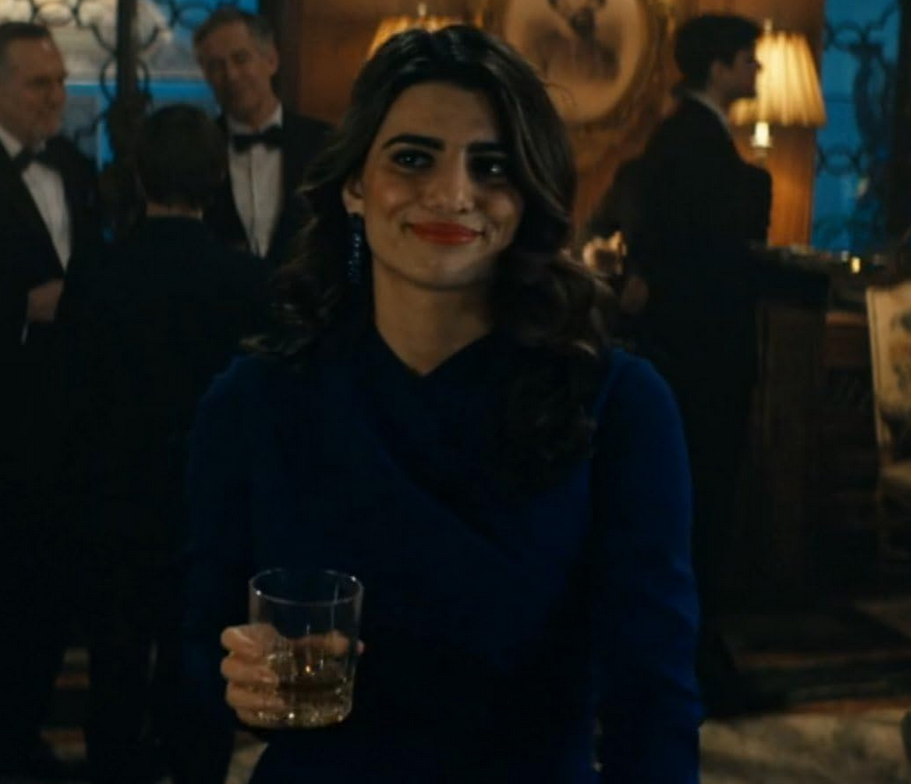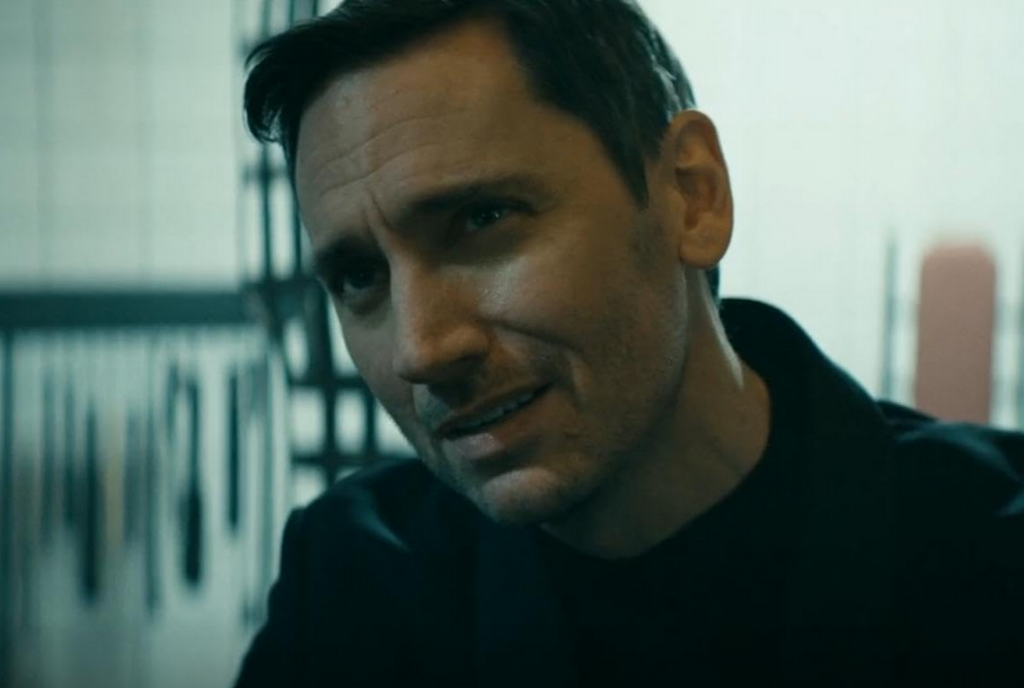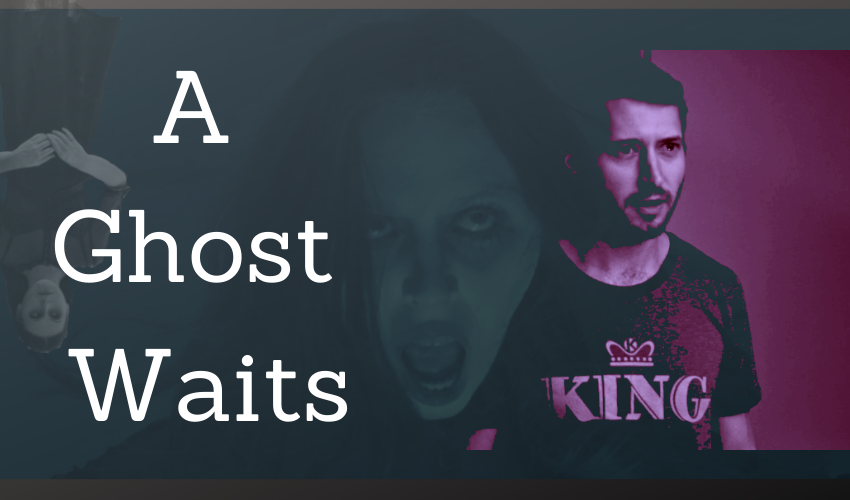
Review: ‘A Ghost Waits’…for your pizza!!!
More Videos
Published
3 years agoon
By
J.M. Brannyk
Don’t you just hate it when a ghost ruins all your plans and makes you fall for her indie-music singin’ ways AFTER she’s stolen your precious pizza?! I hate that the worst of all! And so does our main character in this week’s movie, A GHOST WAITS.
Thanks to Arrow:
This film is brought to us by ARROW – a true indie SVOD service created and run by people that love cult films of all kinds. ARROW is building on our decades of experience in the Cult film and physical media worlds. They believe in film, from horror to action to westerns to the truly bizarre and use their experience as a distributor and our recent digital presence to deliver a very different SVOD service in ARROW.
Their approach to supporting each release on ARROW includes looking to supplement the feature films with hours of additional content that paints a fuller story of the filmmakers, genres and the movies themselves. They commission stunning artwork from some of the best illustrators and artists from around the world and work as closely as they can with the filmmakers themselves in how their film is released.
Check out ARROW today at https://arrowfilms.com/!
I want to put a trigger warning on this one for suicidal ideation/themes. So, if that’s not in your wheelhouse, I’d suggest skipping this, especially the end with “Brain Roll Juice”. Thanks and be well. – J.M.
The Plot: (spoiler-free)
Jack (MacLeod Andrews) is your typical half-neurotic, half-sweet-as-apple-pie handyman. He’s often neglected and shit on by others, including his own friends and his boss, but it’s really through no fault of his own. He likes his job and enjoys the simplicity of fixing the broken, maintaining houses, and rocking out to indie bands. He’s the kind of guy who talks to toilets while cleaning them, and making them talk back.
He’s also the type of guy who is slow on the uptake when he begins to be haunted by a dark and mysterious ghost, Muriel (Natalie Walker). So, chairs rocking on their own, lights going out, and strange dreams don’t bother him much. But push comes to shove when this ghostly apparition STEALS HIS GODDAMN PIZZA!
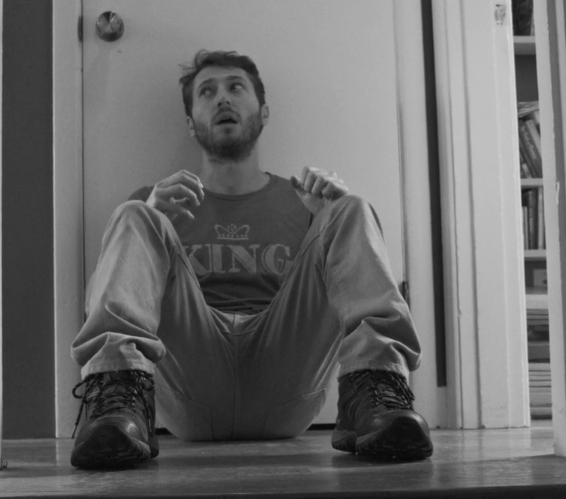
He then starts losing his shit before realizing what’s happening and why so many previous tenants of the house have moved out (ghost on both accounts).
However, frustrated, he confronts the ghost, shocking her and piquing her curiosity in him. They start to form a bond and maybe even…love?
But ghosting is a serious business and if she can’t get him to leave the house, then her ghost license is revoked, or something, and she becomes a “shadow” (which is bad news).
But as just they begin to understand their feelings, the ghost agency sends another ghost to get the job done. Can their love survive? And if so, at what cost?
Thoughts: (spoiler-free)
This is one that hurt because there were a lot of right steps done for a low-budget horror-comedy, but there were also problematic areas that could have been avoided.
They lowered the effects and made it more down-to-earth, including makeup and the very slight gore. These are effects that I could probably do if given some YouTube videos and an afternoon, but that actually enhances the indie feel of this movie.
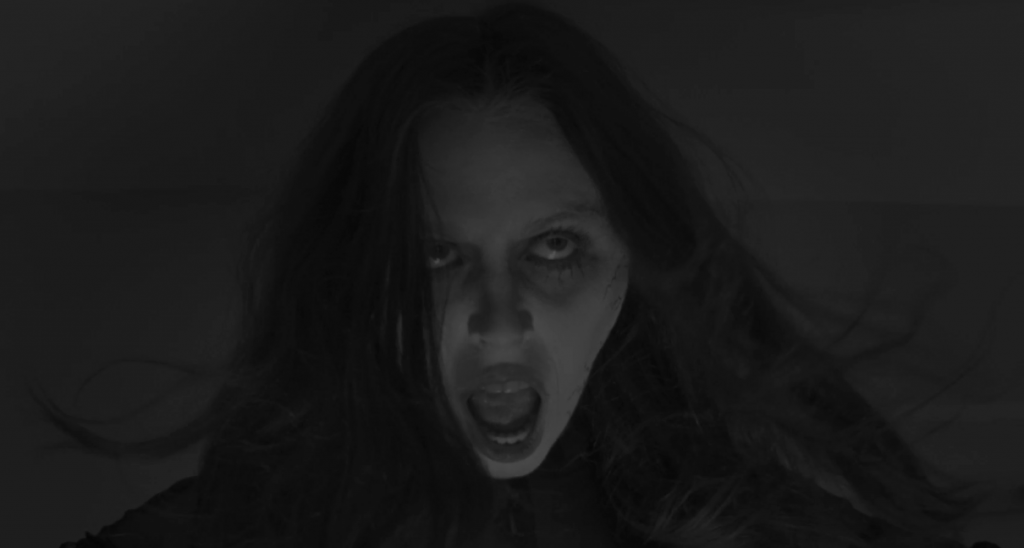
Same with the black and white. It’s not really needed, but it adds to the flavor and the atmosphere, and reminds me of old indie horrors of the early 60’s. There are some fun shots, but for the most part, it’s pretty straight-forward.
The music is filled to the brim with indie bands, which can get a bit tiring after a while because they blur together. But I enjoyed that they were mostly diegetic and a plot point. And I was also happy to see that they were actually used by the characters instead of just blaring in the background.
Okay, let’s get to the really good and the really…not-good.
The really good were the shoulders of MacLeod Andrews because he f***ing carried this thing. His portrayal of Jack was actually sweet, endearing, and relatable. Honestly, it was weird seeing a character that I related so much with during the first act especially. Yes, I have talked to toilets. Yes, I have made them respond to me. We’re friends, get over it. But seriously, his acting was tremendous in this, as were his line reads because it could have gone completely the opposite and he could have sounded like a “nice guy” instead of an actual nice guy. So, I tip my hat, sir.
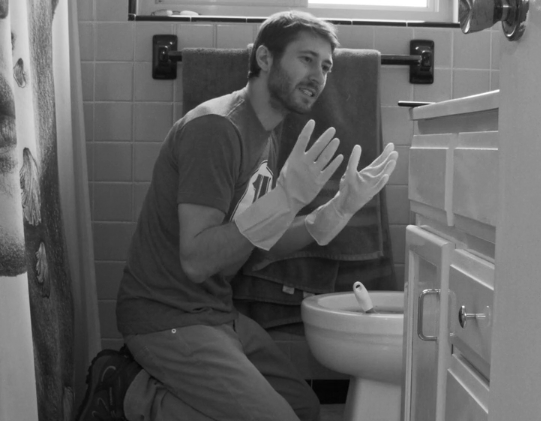
And here comes the not-good, which I’ll talk more about in the next segment, too. The writing, mostly.
When we get to the second act, it begins to unravel. Once our two mains meet, it becomes a mess. We don’t get enough character from Muriel (not backstory, character) to make her memorable or his actions justifiable. The ghost bureaucracy just muddled and slowed the story down. When you add bureaucratic rules to supernatural, it usually gets tiresome unless really well done (i.e. Beetlejuice). It’s like playing a complex role-playing game – suddenly you’re arguing about THAC0 for an hour when you just wanna go kill orcs with your bikini-clad barbarian babe.
If they wanted to add it, we (as the audience) should have learned about it before Jack, so it didn’t feel tagged on and it felt more a part of Muriel’s character. The stakes would have felt higher and we could have connected to her more as a character.
Their flirting/meeting each other was, like, an hour or two at most. They are just sitting at the table and talking for half an afternoon. This equates as love in the movie. Do we need to revisit Frozen?
We never really understand why he even likes Muriel as more than a cool undead chick to sometimes hang with. The love doesn’t feel real or genuine. It feels really forced, in fact.
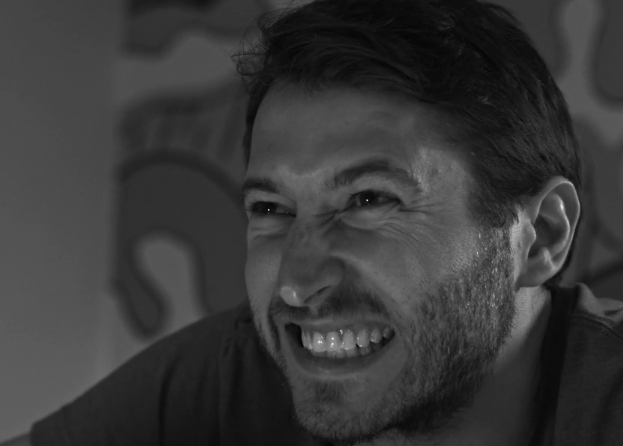
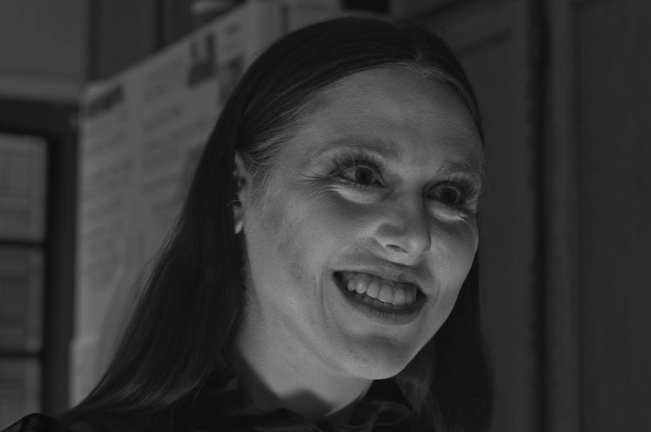
And also, just a BIG no for the line from Muriel, “What’s a movie?”
This is from a ghost who has claimed to understand people’s deepest fears from observing them and you’re telling me she’s never seen a couple people plop down and watch a freakin’ video on Tubi (please Tubi, respond to my voicemails, I love you, please notice my love!)? I call Bull Shenanigans. Hard B.S.
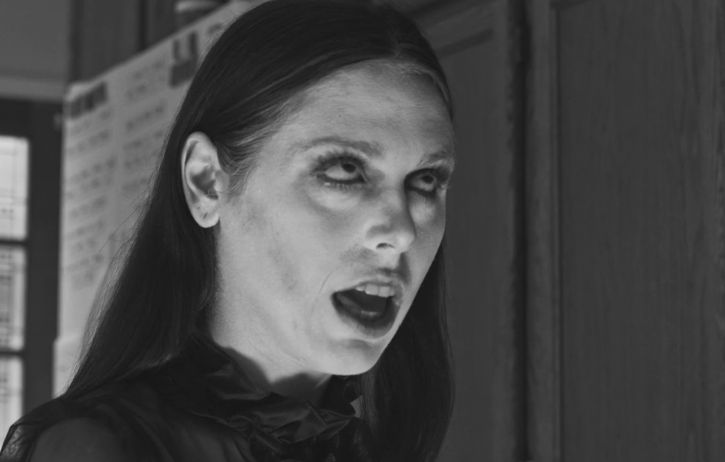
Brain Roll Juice: (spoilers ahead)
Okay, I’m not going to beat around the bush. This is a movie where a guy who has shitty friends feels lonely, meets a ghost for an afternoon, she pays attention to him so he thinks he’s in love, she likes him or whatever, but they can’t be together, SO HE COMMITS SUICIDE.
Let that seep into every crack of your soul. I’ll wait…
Suicide is the answer to this love story.
She doesn’t say, “Hey, wait a minute. Like, you have your whole life…”
Nope, she’s all smiles and thumbs-up as he sits in his car, garage doors closed, waiting to die. He even calls his boss to thank him for everything and we see a scene of his boss finding his lifeless body.
In the next scene, we see the two of them haunting the house together because true love wins and they chose not to fear the reaper.
Yeah, so…
Honestly, I am still not sure what to even say to this ending.
I keep seeing reviews calling A GHOST WAITS heart-warming and charming, and I’m just beside myself. I keep thinking I’m the only one who sees the damn gremlin on the wing of the plane and that gremlin is the alarming rise of suicides in the world.
In the United States, suicide was the tenth leading cause of death overall, claiming the lives of over 48,000 people per year. Suicide was the second leading cause of death among individuals between the ages of 10 and 34, and the fourth leading cause of death among individuals between the ages of 35 and 54. Males are at a higher risk than females, just as rural areas are higher risk than urban.
And if we still believe the theory of Durkheim’s extensive study on suicide (I know it was like forever and a day ago), Le Suicide, we can see a pattern that Jack fits into, which Durkheim called the Egoist Suicide. The Egoist suicide is usually enacted when one feels severely disconnected from their family, friends, community and society. Jack basically even says this at one point, that his life doesn’t matter because his friends don’t want him, his boss doesn’t respect him, and we never hear from his family. He is alone and lonely. He thinks he has no reason to live and one reason to die, so he chooses death.
This is depressive, not happy. The ending glorifies his decision and is played off like it was the right decision. There is no hint of hesitation from him or Muriel.
This, surprisingly, goes back to Beetlejuice, when Lydia is planning on suicide to be with the people who care about her and they tell her that life is hard, but it’s hers to live. They will always love her and be there for her especially when she lives through those challenging times. It’s Barbara and Adam’s love that supports her and drives her to keep living, and not to pull her into the bureaucratic eternity of being a ghost.
Because otherwise the relationship would be selfish and toxic.
Bottom Line:
You might enjoy this romp. There were moments that I truly did. But when it gets down to the nitty-gritty, it falls flat with its mission (a genuine romance) and it’s message (Jack completing suicide = love beats all).

When not ravaging through the wilds of Detroit with Jellybeans the Cat, J.M. Brannyk (a.k.a. Boxhuman) reviews mostly supernatural and slasher films from the 70's-90's and is dubiously HauntedMTL's Voice of Reason. Aside from writing, Brannyk dips into the podcasts, and is the composer of many of HauntedMTL's podcast themes.

You may like
We have come now to the finale of season four of The Boys. And while it didn’t have the literal blood fireworks I wanted, someone did get ripped in half in the air. So, that’s pretty close.
As a note, I will try to avoid spoilers as much as possible. This ending was a hell of a gut punch that should be experienced as blindly as possible. That being said, I will not be able to avoid spoilers and still give a full legitimate review. Proceed at your own risk.
The story
The main storyline for this episode is the attempted assassination of President-Elect Robert Singer. The Boys join forces with the Secret Service to protect him. But, as we learned last episode, Annie has been replaced with a shapeshifter. A shapeshifter that was welcome not just into Hughie’s anus, but into the protective bunker in which the President-Elect is hiding.
What worked
The first thing I want to discuss about this episode is the ending. But we need to do this carefully.
The important thing here is that the ending breaks your heart on so many levels. So many terrible things are happening to characters that it’s almost hard to keep track. And each moment is significant to each character.
I cannot give a specific example. But no matter who your favorite character is, you’re going to weep for them.
Unless your favorite character is Sage. And this is the next thing that made this episode so fantastic.
I don’t think I’m spoiling anything to say that Sage’s plans worked out exactly as she wanted them to. And she got exactly what she wanted.
What she wanted wasn’t power. It wasn’t money or fame or vengeance. It wasn’t to win the love of anyone. She just wanted to see if she could do it.
That is a terrific, terrifying motivation! Because all she wants is to play a massive game of chess with people as pieces. She doesn’t care about anyone. She just wants to see how many people she can manipulate. She just wants to set things on fire to see if she can.
Fantastic. A plus villain work.
The next thing I want to discuss is a cornerstone of the whole series.
The morality of The Boys shifts through the series. While it’s very much a battle to save the world from overpowered super monsters, it’s also a battle for the souls of our real heroes. And in that battle, there are two warring factors. We have Hughie, always trying to bring everyone up to a better level. And we have Butcher, who has no problem at all hitting rock bottom with a shovel in hand to do some more digging.
In this episode, we saw almost every member of The Boys challenged. Will they rise to their higher angels, or sink with their demons?
On a similar note, I am so glad that the writers kind of addressed my issues with Annie. They did this by having the shapeshifter get right into her face and accuse her of thinking that she’s better than everyone.

While that was devastating for the character, it was a little cathartic for those of us who felt like Annie was a little too good of a good guy.
What didn’t work
This is a small matter, but it is an issue that I want to address. After Annie finds out that Hughie slept with her doppelganger, she is furious at him.
In addition to this being unfair, it’s also a very cliche element to add. In almost every instance of a lookalike in fiction, there’s a moment where the love interest of the victim is fooled. Or almost fooled. And it’s always the same fight. It’s just played out and predictable. I’m just glad that it didn’t last very long.
Now that we’ve come to the end of the season, I can officially say that it was amazing. The story was deep and rich. The special effects were a stomach-turning good time. The character development was spot-on and satisfying. And, of course, it left me just about gagging to see what happens next. Unfortunately, it looks like we’ll have a bit of a wait. Because as of right now, the fifth season isn’t expected until 2026.

We’ve reached the second to last episode of The Boys, season four. And, as is appropriate for the penultimate episode of any show, things have to get a lot worse before they can get better.
Let’s discuss.
The story
Christmas is coming, and the whole world is getting ready. Ryan, despite being very clear that he didn’t want to appear on any TV shows or movies, has been strong-armed into participating in a Vought puppet Christmas special. He draws the line, though, when asked to sing about turning one’s parents in if they start talking about woke things.
Meanwhile, The Boys are trying to keep each other together. Butcher decides to take Sameer to the rest of the team. He also gets Frenchie out of prison, hoping they can make the Sup virus necessary to finally take down Homelander. Instead, this decision means disaster for one member of the team.
What worked
I first want to talk about Ryan’s speech near the end of the episode. Because it was exactly the moral of this whole story.
Ryan’s dad is a monster. His stepdad is also kind of a monster. But Ryan is a good kid. He cares about people, about family. And while he loves Homelander and Butcher, he doesn’t want to be like them.
Even better, this speech sounded like something a kid would say. Ryan didn’t open his mouth and start sounding like a college student all of a sudden. He sounds like a kid who misses his mom and wants to live up to the good standards she set for him. And I think that’s terrific.
Speaking of Homelander, he shot himself in the foot in this episode. I said earlier in the season that his hubris was going to be his downfall, and I was right. Without Sage, he just has the same weaknesses he’s always had. He’s going to fail because he just isn’t clever enough or patient enough to succeed.
Without Sage, I think a win is in the bag for The Boys. This isn’t to say that Homelander by himself isn’t dangerous. It’s just that he’s more like a wildfire than a controlled burn. He’s going to cause a lot of damage, but not get anything he wants out of it.
More’s the pity for him and everyone else who has to share his world.
Finally, I am thrilled with A-Train’s redemption story. I love that he wants to be a good person not to save himself, but to be a good person. His honest, pure and warm reaction to that little kid smiling at him in the last episode was heartwarming. It changed him in a moment, bringing to light a goodness that he’s been keeping under wraps for a long time.
This, along with Ryan’s courageous speech, proves once again what The Boys does so well. Yes, it’s gruesome. Yes, there’s blood and balls and batshit events. Yes, someone occasionally gets ripped in half. But there is a true human goodness in the story. One that we catch glimpses of. There are good people among the monsters. There is hope for redemption.
What didn’t work
Of course, so few things in this life are perfect, and this episode was no exception. For instance, I was irritated by the insinuation that Butcher cheated on his wife.
That just doesn’t make any sense. We’ve seen flashbacks of Billy and Becca. They were happy. He was happy. He was head over heels for her. And I don’t think it’s realistic or necessary for the character to throw in that he cheated. It does nothing to add to the story, it’s just a weird and offputting moment.
Doesn’t Butcher have enough to hate about himself? Can’t we just give him that at least he was a good husband?
Finally, I kind of hate that we ended up with Annie being caught. It’s just cliche, which is something I don’t normally say about this show. It feels lazy unless they do something very clever with it in the last episode. Which, I suppose, they might.
Next up is the season finale. And with this season being as insane as it has been, I’m expecting nothing short of bloody fireworks. And I mean literal fireworks of blood. At this point, would it surprise anyone?
 (4 / 5)
(4 / 5)
Episode six of The Boys was one of the most surprising episodes of the series so far. And that is certainly saying something. Because this season has so far been bonkers.
The story
Our episode today revolves around a party at Tek Knight’s lovely mansion. Yes, it does look just like Wayne Manor.
The Boys know that Tek Knight is working with Homelander on something, but they don’t know the details. So they decide to send Hughie in to bug the mansion.
Because that’s worked so well the other two times he’s tried to hide a bug!
It should surprise no one that this time goes no better. Hughie finds himself in Tek Knight’s basement. And by that I mean his BDSM dungeon.
Meanwhile, the party upstairs is no less disturbing. Homelander and Sage are trying to convince some well-off political donors to support a cue after the election. When pressed for details on his plan, Homelander freezes. He looks to Sage for help, but she wasn’t recently shot in the head and still in the junk food stage of her healing.
Fortunately, or unfortunately depending on your point of view, Neuman jumps in and saves the day.
What works
If I’m going to say one thing about this episode, it didn’t hold back at all. I didn’t expect them to show a character masturbating, sitting their bare behind on a cake, or spraying breastmilk into someone’s face. But every time I thought they’d cut the scene and let something be left to our imagination, they did not do that.
This is a dangerous move. Whenever you show the monster, you run the risk of them not being scary enough, or gross enough. As Stephen King says in Danse Macabre, to leave this sort of thing to the imagination if the reader makes things so much worse. So when they finally experience the monster, they might say that this isn’t so bad. It could have been so much worse.
But in this case, they managed to avoid that by making the scenes, especially the ones in Tek Knight’s dungeon, so much worse than I imagined it would be.
What doesn’t work
While this was a deeply disturbing episode in many ways, there was one really innocent and sweet moment.
And yes, I did have a problem with it.
Confronted by Firecracker, Annie decides to apologize for spreading rumors about her when they were kids. She tells her that she is genuinely sorry.
And I believe her. I don’t think Firecracker did, but I did.
So why is this an issue? Because I’m starting to think that Annie is maybe too nice. She is too good.
I know that Annie is our good guy. But every one of the other good guys has flaws. Hughie let his pride get in the way and took Temp V. MM hid himself from his daughter instead of teaching her to work through her emotions. Kimiko is far too closed off and has a hard time trusting others. Frenchie numbs himself with drugs. And well, what hasn’t Butcher done?
It is unrealistic that Annie is just so kind and so flawless. We all have shadows in our personalities. We all have weaknesses, we all mess up. We all do things we wish we could take back. The fact that Annie doesn’t seem to have anything like that is not just unrealistic. It’s infantilizing.
Give her some deep dark secrets. Give her something real to regret.
This was a shocking episode, even for someone fairly jaded like me. I wasn’t expecting the sort of weird sexual depravity, though I guess maybe I should have seen it coming. It was dark, upsetting, tense, and funny as hell. And with just two episodes left in the season, I can imagine the stakes are only going to get higher.
 (4 / 5)
(4 / 5)
By the way, if you like my writing you can get my short story, Man In The Woods, on Smashwords and Amazon.



